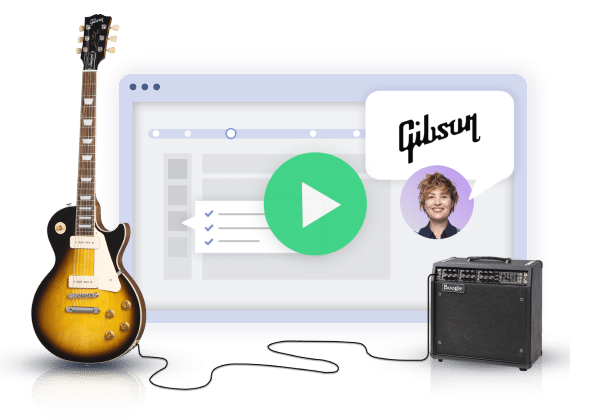As customers become more aware of privacy concerns and industry regulations like GDPR in Europe, PDPA in Singapore, and the CCPA in the USA, marketers are relying more and more on the zero-party data that consumers intentionally share about themselves.
There are a multitude of ways you can capture this data and use it to provide richer customer experiences. Let’s explore zero-party data and how customers can provide you with this information.
What is Zero-Party Data?
Forrester coined the term zero-party data and states it’s “Data that a customer intentionally and proactively shares with a brand, which can include preference center data, purchase intentions, personal context, and how the individual wants the brand to recognize her.”
Zero-party data is information a customer shares directly with you about themselves, and it’s vital your brand collects this information since Safari and Firefox, and recent iOS 14 changes, have fundamentally altered the way a brand collects customer data and tracks advertising performance.
Benefits of Zero-Party Data
Customers want to hear from you. This is one of the main reasons they provide you with this information. The major benefits of zero-party data include:
- Quality and accuracy: Since zero-party data comes directly from the customer, your brand can be certain that a customer wants to hear from you.
- Relevance: Because zero-party data comes straight from your audience, you learn exactly how customers would like for you to connect with them, based on their preferences.
- Inexpensive: Since it already exists within your systems, collecting zero-party data is very cost-effective. Unlike other data collection types (second- and third- party), you don’t pay for zero-party data as customers simply hand it over.
- Compliant: Being compliant for zero-party data collection has little to no risks because you know the source of data, in addition to how it was collected.
The only downside of zero-party data collection is that if you ask customers for too much information at once, you risk making them feel overwhelmed. Instead, spread out the times you request this data.
Have Better Quality Data
Your customers desire a highly personalized experience across every channel they use. According to eMarketer, greater customer loyalty can be achieved by providing these custom experiences.
If you’re honest in telling your customers that you need their data to provide them with better quality experiences, they’re more likely to share it. You can even frame it as a collaborative effort toward providing them a better experience.
Build More Effective Campaigns
As zero-party data comes directly from your customers, coupling this with your first-party data (SMS interactions, email CTRs, web browsing behavior, etc.) gives you deep insights to create those 1:1 personalized experiences for every shopper, online and in-store.
“Right now I believe that marketers have a huge opportunity to get on the front foot with regard to customer data, how they gather and use it, and how they explain and demonstrate the value to customers for giving them the permission to use that for a period of time. And, you know, I think I’m seeing it and I’m delighted that I’m seeing it, that marketers are absolutely thinking about their data strategy and how they’re going to move into that totally different mindset. It’s a totally different mindset to give me all of the data I can, just get it from anywhere, and, you know, I’ll see what I can do with it, into what do I need to add value to my customer? What is the value I’m going to give them back for it? And then how do I acquire directly in a relationship of trust? And to me, you know, this is kind of core to the new battleground for brands going forward, will be how will they do that.”
Gain Trust Through Transparency
Honesty and transparency are the cornerstones of a lasting relationship. It’s only natural that customers expect this if you want them to consistently return to your brand. Being transparent is the first step toward earning a customer’s trust, and in turn, their loyalty.
According to Forbes, “Over 90% of consumers say transparency by a brand is important to their purchase decisions.” Transparency is so vital that “94% of all consumers are more likely to be loyal to a brand when it commits to full transparency.“ (ink.com)
You can convey transparency through your openness, communication, and availability (and how accessible your people are). Transparency also means being willing to admit your errors and learn from them. And don’t forget to share with customers how you’re going to use and protect the information they share with you.
How to Collect Zero-Party Data
There are a variety of ways you can collect zero-party data, including online and in-store, through an email preference center, quizzes, social stories, polls, and much more. Let’s take a look at some examples from top companies on how you collect zero-party data:
Registration
If you want to target and customize your product or service toward your customers, you can walk them through an experience like Babbel does before new users start with their mobile app service.
Website
Providing options for users to choose what communication they receive from you is a great way to collect zero-party data and build that relationship, much like Wistia does on their site.

Social Media
Using an Instagram Poll can provide you more insights into a customer’s preference and style, and it’s one of the fastest ways to gain more zero-party data.

Emails
One fun way to capture additional zero-party data is to ask a customer for their birthday, in exchange for receiving something on that special day.

In-store
There are a couple of ways to gain data from customers in-store. One example is signing a customer up for a loyalty card, and encouraging them to use that card when they make a purchase so you can obtain their purchase preferences once they check out.
Another great way to get this data is to do what Reformation does. They’re a sustainable fashion brand, and in-store, much like one would do online, customers provide an email address to checkout. With this email address, Reformation gains all information such as style and size preferences.

Preference Center
A clear and concise email preference center makes it easy for subscribers to receive the emails they want to receive and fewer of the ones they do not.

Final Thoughts
Zero-party data is a worthwhile piece of data to collect, and it’s something your buyers and/or users are willing to provide. Just remember to remain open as to how your brand is using that data, and don’t overwhelm customers with questions regarding their preferences.
Remember that a lasting relationship rests on honesty and transparency. You can make your organization transparent by being open, communicative, and accessible, and you can share with customers how you’re going to use their data and how your brand will protect the information they share with you.
Lastly, be sure to take the relationship slow by not overwhelming customers with questions. You can spread this out over time, much like in the examples above, by asking only for the data you’ll incorporate into your campaigns to create a unique 1:1 experience that your customers desire.
Handpicked Related Content:
















